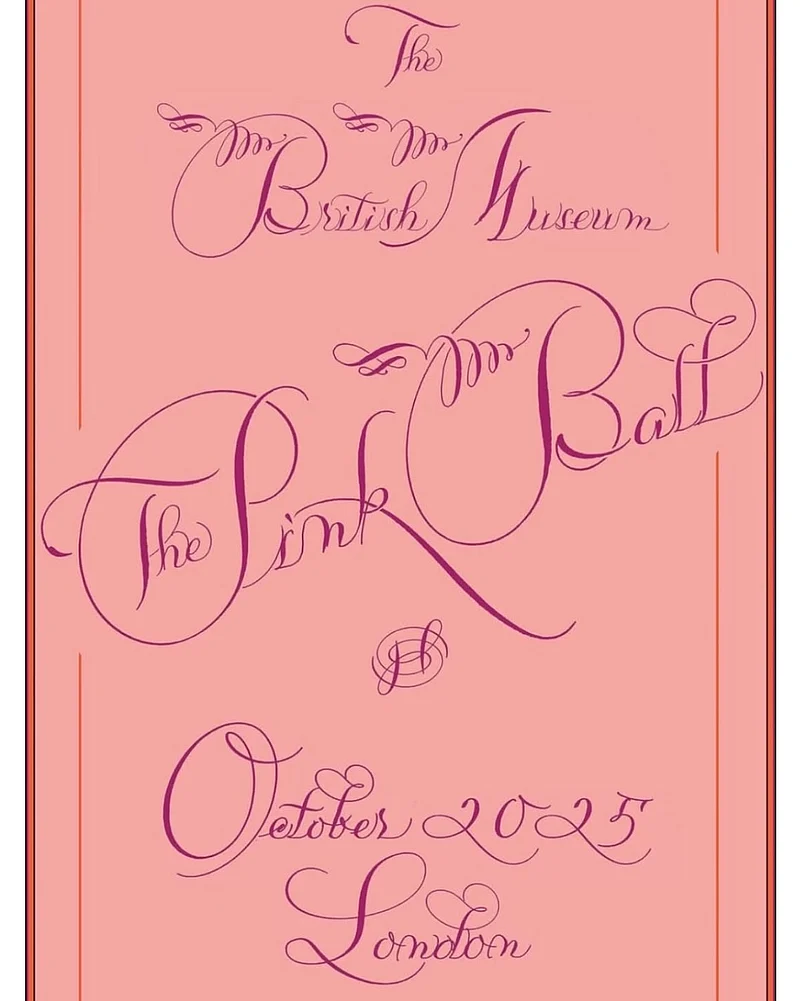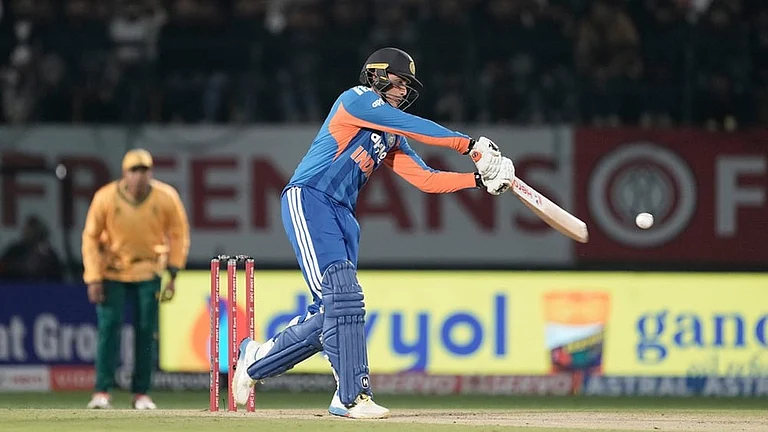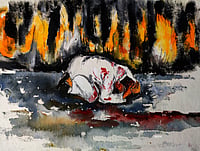
The British Museum’s debut ‘Pink Ball’, themed around “the colours and light of India”, is drawing criticism for reducing India’s vast cultural identity to a single aesthetic.
Indian designers and museum heads argue that India’s heritage should also be celebrated within the country, not just repackaged for Western audiences.
The corresponding exhibition also raises questions. In 2025, nearly 80 years after independence, why are India’s Ancient Living Traditions still being displayed for the West?
For the West, India has always invoked colours: vivid, riotous, impossible to contain. This has been translated into exotica, into a stereotype. Their gaze has reduced a country to a colour palette to admire from afar.
So why is the West, this time, set on trapping India in pink? Is it just a random shade, or is it a tone that bars India the political and cultural undertones far too complex for the West to comprehend?
What is pink? For a colour, experienced by the brain rather than defined by a single wavelength, how can it possibly contain the vast multitudes that India embodies: its cultures, castes, classes, landscapes, and histories?
The British Museum seems to think it can. Pastel pinks have recently become a global trend; the brighter, Barbie pink is chemically manufactured. Yet how, one wonders, can any shade of pink capture the pulse and contradictions of India?
Or is this just another Western gaze, an attempt to render India “just right“, not too loud, not too rich, not too overwhelming, but perfect for a fantasy where world-class celebrities, designers, and a select few Indians—who themselves no longer inhabit the realities of the wider country—come together for a night in an imagined India?
This conversation about pink takes a tangible form tomorrow, with the British Museum hosting its debut gala, ‘The Pink Ball’. Many critics are calling it London’s equivalent of the Met Gala at the Metropolitan Museum of Art, New York. Like the Met Gala, the Pink Ball is being held alongside an ongoing exhibition, Ancient India: Living Traditions, supported by Reliance Foundation and Industries, which concludes on October 19.
The theme of the ball, as the name suggests, is ‘Pink’, inspired by “the colours and light of India.” Isha Ambani is chairing the ball along with Dr Nicholas Cullinan, Director of the British Museum. The committee features global figures like Naomi Campbell, Edward Enninful, and Miuccia Prada, alongside household names like Sonam Kapoor and Sabyasachi Mukherjee. Commenting on the theme, Dr Cullinan said, “It has to be this pink that almost has a bit of purple. It can’t be too blush, or too garish. It can’t be Barbie pink. It’s got to be right.”
And yet, one can’t help but ask: how, really, is Pink related to India?
When asked about the ‘Pink’ theme of the ball, Fashion Designer Anuj Sharma, founder of Button Masala, known for his zero-stitch designs and expertise in Indian textiles, said, “I’ve looked through many pictures of people on the streets across India, and most of them are wearing white. Dyeing fabric was expensive — colouring was a luxury — and indigo was one of the few dyes that were widely used. If there’s any other colour associated with India apart from white, it would be indigo. Indigo was popular, it was traded extensively, and it’s the colour that made Indian textiles famous across the world.”
Apart from the theme, the corresponding exhibition also raises questions. In 2025, nearly 80 years after independence, why are India’s Ancient Living Traditions still being displayed for the West? Critics may argue that the British Museum is a global institution, but given its colonial past—where it profited from goods looted from colonised countries—how is it fair that it continues to profit from exhibiting India’s artefacts? The British Museum has reportedly made 1.6 million dollars from the sold-out ball.
“It’s a fact now that if you remove Asia and Africa, what will remain in these museums? If you take away these two continents, what are they left with? Europe and all those countries—even the US—what history do they have? A history of 500 years. India, on the other hand, has a history of more than 5,000 years,” shared Anjani Kumar, Director General of Bihar Museum.

Speaking about the irony of a global event on India being held at the British Museum instead of in India, Sharma said, “We have to start blaming ourselves for this colonial hangover. Those who held on to the idea of the British and Europe—they’re all gone. They lived, they fought, they got us freedom, and they died. They wanted to make it swadeshi. It’s we who are making it Western.”
He added, “If you look at Bhutan from the US, why do we only think of America as the West? It’s the East, too. But unfortunately, because America and England are considered ‘the West,’ we automatically think of ourselves in relation to them. We say ‘Indo-Western’ fusion, but never ‘Indo-Eastern.’ The point is, culturally, our necks are turned only in one direction. We fail to look towards our own neighbourhood—Myanmar, Burma, and many more.”
Anjani Kumar shares a similar view: “If anything is happening internationally, I’m not opposed to it, because it’s a very globalised world. The only thing I feel is that now is the time we should look inward. We have the infrastructure, we have everything—we should be doing these things here, in India. It is important that such platforms should also be created here. If you have the money and want to host a major exhibition, there should be no need to go to Paris or New York.”
While the Pink Ball celebrates India on a global stage, it also highlights a deeper conversation about cultural self-perception and ownership. As India gains international recognition, voices like Sharma and Kumar urge a parallel focus at home—building platforms, celebrating heritage locally, and embracing the richness of India’s own traditions rather than looking outward for validation. The question remains: if India can shine globally, why not let it shine fully on its own soil?



























